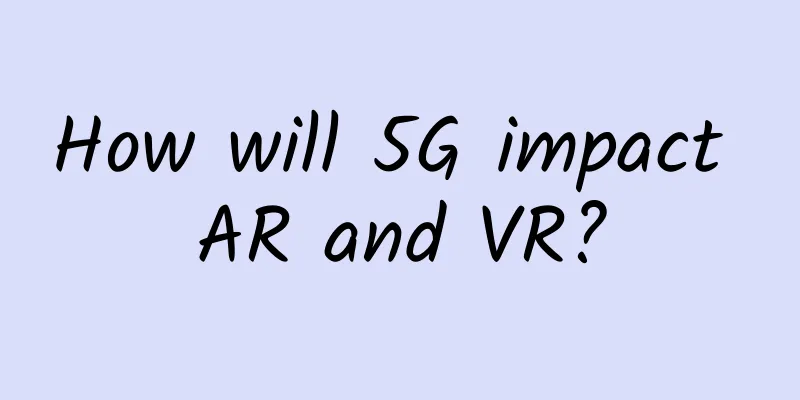How will 5G impact AR and VR?

|
There has been a lot of discussion about the evolution of the worlds of augmented reality and virtual reality. Part of the conversation has focused on how AR and VR technologies can leverage 5G capabilities. MarketsandMarkets estimates that the AR and VR global market will reach $115 billion by 2027, and the possibility of many industries adopting more immersive technologies is no longer in doubt. At the same time, the use cases of 5G have been increasing in recent years. Considering the network capabilities, it is necessary to explore how the fifth-generation network will affect AR and VR technology. AR and VR ExplainedAR is a technology that allows virtual objects to be superimposed on real-world environments without obscuring the real environment. AR attempts to provide more insight into perception by generating and adding artificial infographics, images, videos, sounds, and other computer-generated details to reality. VR, on the other hand, uses wireless VR headsets, sensors, or other immersive technology tools to recreate the real world and replace it with a virtual environment. In VR, the user is cut off from the real world and immersed in interactive 3D models of digitized objects and simulated spaces. How will 5G affect the evolution of AR and VR?5G is designed to provide more responsive, faster, and more reliable connections than anything that came before it. But what implications do these qualities have for the future of AR and VR? Reduce data congestion between the headset and the computerVR experiences rely on large amounts of data being transferred back and forth between the headset and the computer system. For high-quality AR and VR experiences, data must be transferred quickly and avoid congestion. Unfortunately, when it comes to managing large amounts of data, 4G connections can struggle to convey all the information at once. However, with 5G providing large bandwidth and low latency, AR and VR pictures, videos, and animations can be loaded without unstable performance, leading to better AR and VR experience. High-quality display of immersive videoMost AR and VR that display 3D videos require higher bandwidth for seamless display. However, some AR and VR devices currently do not support network connections that can facilitate and enhance the quality display of these bandwidth-intensive videos. This affects the user experience of these immersive technologies and hinders their growing use cases. The advent of 5G could change that by providing a much higher amount of bandwidth. By leveraging the millimeter wave technology offered by 5G, which runs at extremely high frequencies, AR and VR devices can render more realistic 3D videos and immersive displays. Infinite Extended RealityExtended reality is a term commonly used to refer to AR, VR, mixed reality and other immersive technologies. Immersive technology companies are looking for a way to develop immersive mobile XR experiences that can present realistic visuals by combining 5G and edge computing. Likewise, big VR and AR development companies like Qualcomm, HTC, and Samsung are considering merging mobile VR headsets and AR glasses into a sleeker XR wearable. Bringing these aspects of immersive technology together requires real-time communications, low latency, and seamless data transfer. However, applying 5G capabilities to AR and VR could make this more achievable. Advancing the use of AR and VR in medical practiceThe need for remote healthcare has never been greater or more applicable than it is today. Due to the COVID-19 pandemic, the number of remote health consultations has increased significantly. With this in mind, healthcare professionals can be trained and prepared for anatomical visualization through AR goggles. This AR/VR-driven medical practice requires high bandwidth, fast communications, and low latency, which is where 5G can make a meaningful impact. 5G can boost the use of AR and VR in telemedicine procedures by providing a stable connection for response times between patients and medical consultants. Adding 5G to the mix will also ensure high-end display of images and videos to help consultants keep an eye on patients in real time. In other words, 5G can boost the use of VR in learning how to perform surgeries without touching the patient. More realistic gamesPreviously, gamers relied on flat-panel monitors to play games. But with the advent of immersive technologies such as AR and VR, players can immerse themselves in more realistic and personalized environments. This new development has boosted the video game industry, making it a booming market. According to a recent report by Technavio, the global gaming market share is expected to reach $75 billion by 2026. With the increasing use of AR and VR in modern game development, 5G can further boost these games. The use of 5G will ensure that developers can create games that offer better graphics quality and better response times without network latency. |
>>: Time is of the essence. Huawei advocates accelerating the move towards an intelligent world.
Recommend
Transitioning from IPv4 to IPv6, you can't miss these knowledge points
[[277315]] Understanding the network model The ne...
Guangdong Unicom brings new vitality to traditional private lines Huawei is willing to be the network reconstructor behind the scenes
[51CTO.com original article] During the 4th Globa...
Huawei launches Intelligent Body and works with partners to build full-scenario intelligence
[Shanghai, China, September 24, 2020] During HUAW...
Synchronized is the king's harem manager, and thread is the queen
If synchronized is the "chief steward" ...
Japanese telecom operator NTT DoCoMo suffers massive communications outage, affecting 2 million users
[[429282]] On October 16, according to Nikkei Chi...
edgeNAT Double Holiday Event: 20% off for monthly VPS and 30% off for annual VPS + free top-up
edgeNAT has announced a promotion for this year&#...
How does Huawei Software Development Cloud make DevOps a reality?
DevOps has transformed the workflow and tradition...
Inventory: Ten key steps in the development of quantum communication in China, from following to partially leading
[[408654]] 01 Deceived-state quantum key distribu...
HostingViet: Vietnam VPS monthly payment 30% off, 28 yuan/month-1GB/20G SSD/unlimited traffic
HostingViet has updated the validity period of th...
Justg: Japanese native IP hosting is available with annual payment starting from US$49.99
I haven't shared information about Justg for ...
Byte side: TCP three-way handshake, very detailed questions!
Hello everyone, I am Xiaolin. A reader was asked ...
Research shows that more than half of consumers in Asia Pacific consider a secure app experience more important than convenience
Today’s consumers are willing to sacrifice applic...
State management expert: Cookies and Session
1. Introduction Hello everyone, I am Xiao❤, a 985...
5 things you should know about monitoring tools
Does your IT team have too much data and not enou...









